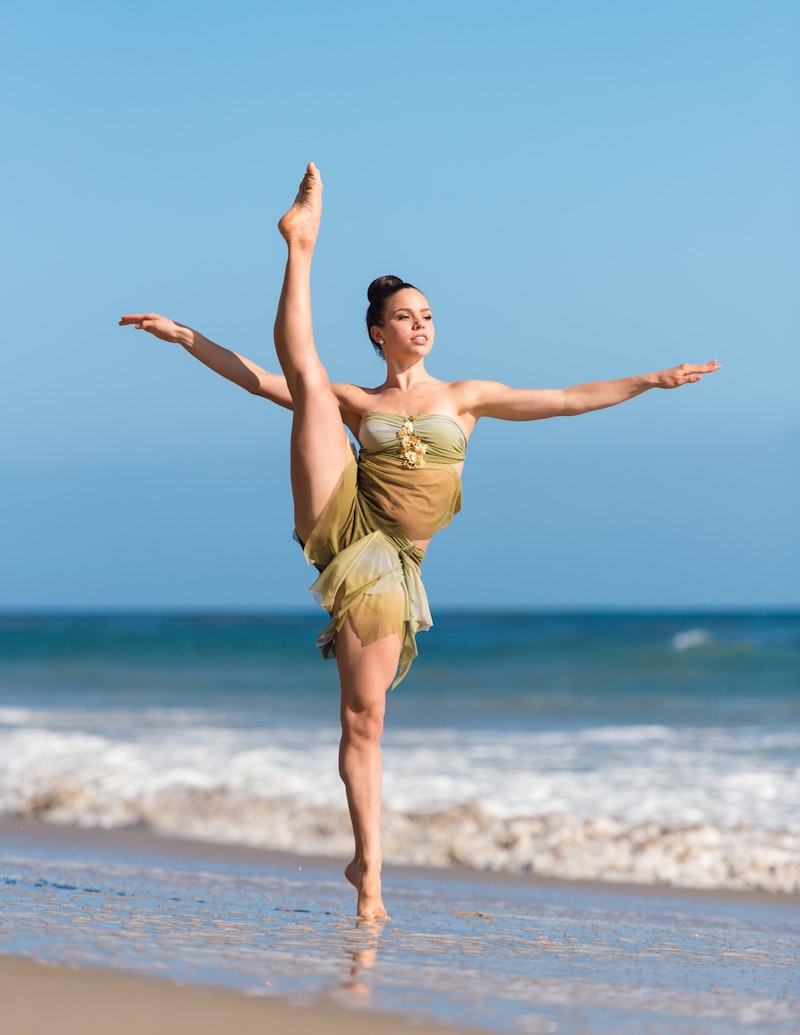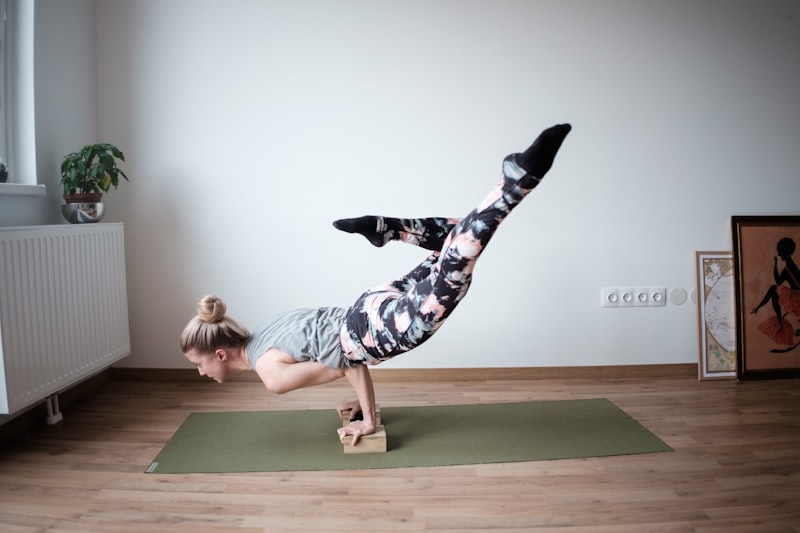Are you ready to bend it like a yogi and boost your flexibility? Yoga isn’t just about striking poses; it’s a powerful tool for enhancing your body’s flexibility in ways that go beyond mere stretching. Whether you’re a newbie or a seasoned practitioner, incorporating yoga into your routine can work wonders for your flexibility journey.
Yoga’s secret lies in its ability to target not just the obvious muscles but also the connective tissues and joints. Think of it as oiling the gears of a machine – yoga poses gently coax your body into greater ranges of motion, making it more supple and resilient over time. This isn’t about forcing yourself into pretzel-like shapes but about gradual progress and honoring your body’s current capabilities.
Start with beginner-friendly poses like Downward Dog, Child’s Pose, and Cat-Cow to acquaint yourself with the basics. These poses not only stretch out your muscles but also introduce your body to the rhythm and flow of yoga. Remember, it’s not a race; listen to your body and let it guide you through each pose.
As you become more comfortable, gradually challenge yourself with poses that target specific areas needing flexibility. For tight hamstrings, try Forward Fold or Seated Forward Bend. To open up your hips, explore poses like Pigeon or Happy Baby. Each pose serves a purpose, gently coaxing your muscles to relax and lengthen.
Consistency is key when using yoga to improve flexibility. Aim for regular practice sessions rather than sporadic bursts. Just like watering a plant daily helps it grow, consistent yoga practice nurtures your flexibility over time. Even short sessions can make a noticeable difference if done regularly.
Remember, flexibility isn’t just physical; it’s a mindset too. Approach your practice with curiosity and patience. Celebrate small victories – reaching a bit further in a stretch or holding a pose a few seconds longer. With yoga, the journey to greater flexibility is as enriching as the destination.
So, are you ready to roll out your mat and stretch your limits with yoga? Embrace the journey, and let yoga guide you towards a more flexible and resilient body. Your future self will thank you for investing in your flexibility today.
Unlock Your Body’s Potential: Mastering Yoga for Enhanced Flexibility
Yoga isn’t just about striking impressive poses; it’s a holistic approach to fitness and well-being that incorporates breath control, meditation, and stretching. When you commit to a regular yoga practice, you’re not only improving your physical flexibility but also enhancing your mental clarity and emotional balance.
One of the fundamental principles of yoga is its focus on flexibility. Through a series of poses (asanas) that gently stretch and elongate your muscles, yoga helps to release tension stored in your body. Imagine each pose as a gentle tug on a knot in a rope, gradually loosening it until the rope is smooth and supple.
Whether you’re aiming to touch your toes for the first time or achieve a perfect split, yoga offers a pathway to reach your goals. The beauty of yoga lies in its adaptability; there are poses suited for every body type and fitness level. With consistent practice, you’ll notice improvements in your range of motion and joint mobility, allowing you to move more freely and comfortably.
Flexibility gained through yoga isn’t just physical; it extends to your mental and emotional states as well. As you learn to breathe deeply and stay present in each pose, you cultivate mindfulness and reduce stress. This mind-body connection is key to harnessing your body’s full potential and achieving overall well-being.
Moreover, yoga is a journey of self-discovery. It teaches patience, perseverance, and self-acceptance as you progress at your own pace. Each time you step onto your mat, you’re investing in your health and vitality, nurturing a deeper connection between your body, mind, and spirit.
Bend, Stretch, Thrive: Yoga’s Ultimate Guide to Flexibility
Yoga isn’t just about striking picturesque poses; it’s a holistic practice that encompasses flexibility as a cornerstone. Imagine your body as a rubber band—when it’s stiff, it’s prone to snapping under pressure. But with regular yoga practice, you’re like that same rubber band, becoming supple, resilient, and able to stretch to new lengths without breaking.
Flexibility in yoga isn’t just about touching your toes; it’s about creating space within your muscles and joints. Each stretch and bend in yoga gently elongates the muscles, releasing tension that builds up from sitting at desks or standing for long hours. This release not only feels amazing but also improves circulation and reduces the risk of injury.
Moreover, yoga encourages you to listen to your body and move at your own pace. It’s not a competition to see who can contort the most—it’s a personal journey of self-discovery and growth. As you practice regularly, you’ll notice that those impossible poses become more accessible. Your body adapts, muscles lengthen, and suddenly, you’re amazed at what you can achieve.
Beyond physical benefits, yoga’s impact on mental flexibility is equally profound. The focus on breath and mindfulness helps calm the mind, reducing stress and enhancing clarity. When you’re less tense mentally, your body responds by relaxing physically—a beautiful symbiosis that leaves you feeling both energized and at peace.
From Stiff to Supple: Yoga Poses That Transform Flexibility
Downward Facing Dog, also known as Adho Mukha Svanasana, is a classic yoga pose that targets multiple muscle groups while elongating the spine and stretching the hamstrings. This pose not only increases flexibility but also builds strength in the upper body and core. Imagine yourself like a graceful inverted “V”, feeling the stretch from your fingertips to your heels.
For those looking to open up tight hips and increase flexibility in the lower body, Pigeon Pose (Eka Pada Rajakapotasana) is a fantastic choice. This pose deeply stretches the hip flexors, groin, and glutes, promoting greater range of motion and suppleness in the hips. Picture yourself like a contented pigeon, gracefully settling into a comfortable stretch.
Warrior II Pose (Virabhadrasana II) is not just about strength; it’s also an excellent posture for improving flexibility in the hips, groin, and shoulders. As you sink into the pose, feel the stretch in your inner thighs and the openness in your chest and shoulders. Embrace the warrior within you, poised and flexible.
If you’re aiming to lengthen and stretch your spine while also enhancing flexibility in the shoulders and hamstrings, Forward Fold (Uttanasana) is your go-to pose. Let gravity do its work as you fold forward from the hips, feeling a gentle pull in the back of your legs and spine. Imagine yourself like a waterfall, flowing effortlessly towards the earth.
Lastly, Bridge Pose (Setu Bandhasana) is perfect for opening the chest, shoulders, and hip flexors while strengthening the back and hamstrings. As you lift your hips towards the sky, feel the expansion in your chest and the release in your lower back. Picture yourself like a sturdy bridge, strong yet flexible.
Flexibility Unleashed: Yoga Techniques for Every Body

Imagine waking up each morning feeling as limber as a cat stretching in the sun. That’s the magic of yoga. It’s not just about touching your toes; it’s about connecting with your body and embracing its capabilities. Through a series of gentle stretches, twists, and poses, yoga encourages flexibility in ways that other exercises might not. It’s like giving your muscles a daily dose of sunshine—they become more supple, more resilient.
One of the beauties of yoga is its adaptability. No matter your age or fitness level, there are poses that can be modified to suit you. If you’re a beginner, starting with basic poses like Downward Dog or Child’s Pose can ease you into the practice gently. For those seeking a challenge, advanced poses like King Pigeon or Wheel pose can push your flexibility to new heights. The key is to listen to your body and honor its limits while gently pushing past them.
Have you ever marveled at the grace of a dancer or the agility of a gymnast? Yoga, too, can cultivate that sense of grace within you. It’s not just about physical flexibility; it’s about mental flexibility as well. As you flow through poses, focusing on your breath and the sensations in your body, you cultivate a mindful awareness that can translate into your everyday life.
In essence, yoga is a journey of self-discovery through movement. It’s about unlocking the potential that lies within you, one pose at a time. So, whether you roll out your mat in a bustling studio or find a quiet corner at home, remember that yoga is for every body—and the benefits stretch far beyond the physical.
Achieve Elasticity: Yoga’s Pathway to Flexibility
Yoga, an ancient discipline originating from India, offers a pathway to achieve remarkable elasticity in your body. Unlike mere stretching exercises, yoga combines precise poses with focused breathing and mindfulness. It’s a holistic approach that not only stretches your muscles but also enhances your overall flexibility and strength.

Imagine your body as a finely tuned instrument. Each yoga pose is like a chord that you strum, gently coaxing your muscles to extend and contract in harmony. Whether you’re reaching for your toes in a forward bend or arching gracefully into a backbend, each movement increases your body’s elasticity bit by bit.
One of the key elements of yoga is its emphasis on holding poses for extended periods. This challenges your muscles to relax and lengthen gradually, increasing your range of motion over time. It’s not just about touching your toes; it’s about feeling the stretch in every fiber of your being and learning to embrace that sensation with ease.
Moreover, yoga isn’t just about physical flexibility; it’s about flexibility of the mind and spirit as well. As you delve deeper into your practice, you learn to let go of tension, both physical and mental. You become more adaptable to life’s twists and turns, finding a sense of calm amidst chaos.
Incorporating yoga into your routine doesn’t require you to contort yourself into pretzel-like shapes from day one. It’s a gradual journey of self-discovery and improvement. With consistent practice, you’ll notice subtle changes in your flexibility, strength, and overall well-being.
Beyond Boundaries: Yoga’s Role in Pushing Flexibility Limits
At its core, yoga is a journey inward, a fusion of breath and movement that challenges the body to expand its boundaries. From the graceful arcs of a backbend to the deep folds of a forward bend, each pose encourages greater elasticity in muscles and joints. Imagine your body as a finely tuned instrument, each stretch and twist refining its ability to bend and flex with ease.
What sets yoga apart is its holistic approach to flexibility. Unlike rigorous workouts that focus solely on muscle isolation, yoga integrates flexibility with balance, strength, and mindfulness. It’s about cultivating a body that moves effortlessly through space, adapting to various postures with fluidity and grace.
Beyond physical benefits, yoga also stretches the mind. As you delve deeper into your practice, you discover mental flexibility—a capacity to embrace challenges with equanimity, to bend without breaking when life throws curveballs your way. It teaches patience and resilience, qualities that extend far beyond the yoga mat.
In today’s sedentary lifestyles, where hours are spent hunched over desks and screens, yoga offers a liberating counterbalance. It counters the stiffness that creeps into our bodies, gently coaxing muscles to release tension and joints to regain their full range of motion. Each session becomes a journey of exploration, uncovering layers of flexibility you never knew existed.
Flowing with Ease: Yoga Strategies for Improved Flexibility
One of the keys to enhancing flexibility through yoga is consistency. Like anything worth mastering, practice makes progress. By dedicating regular time to your practice, you allow your muscles to adapt and lengthen gradually. Think of it like watering a plant—consistency nurtures growth.
Another powerful strategy is to focus on your breath. Yoga teaches us that the breath is our anchor during practice. Deep, mindful breathing not only oxygenates the muscles but also relaxes the body, making it easier to ease into deeper stretches. It’s like giving your body a soothing internal massage.
When practicing yoga for flexibility, it’s essential to listen to your body. Flexibility isn’t achieved overnight, and pushing yourself too hard can lead to injury. Instead, honor where your body is at each session. Some days you might feel more supple than others, and that’s perfectly okay. Yoga is about meeting yourself where you are.
Utilizing props can also be a game-changer. Blocks, straps, and bolsters are your friends—they provide support and help you maintain proper alignment as you work on your flexibility. Think of them as training wheels that assist you until you’re ready to balance on your own.
Lastly, consider incorporating dynamic movements into your practice. Flowing sequences like Sun Salutations not only build strength and endurance but also enhance flexibility by moving the body through various ranges of motion. It’s like a dance that stretches you from head to toe.
So, there you have it—five effective strategies to flow with ease and improve your flexibility through yoga. By embracing consistency, mindful breathing, listening to your body, using props wisely, and incorporating dynamic movements, you’ll find yourself bending and stretching with newfound grace and ease on your yoga journey.
Frequently Asked Questions
What are some tips for beginners to start using yoga for flexibility
Discover essential tips for beginners to effectively use yoga for improving flexibility. Learn how to start gradually, focus on proper breathing techniques, and explore beginner-friendly poses that target different muscle groups. Consistency and patience are key as you progress in your yoga practice for increased flexibility.
How often should I practice yoga to see improvements in flexibility
Discover how frequently you should practice yoga to enhance flexibility. Get insights on optimal practice frequency for visible improvements in flexibility.
Can yoga help with specific areas of the body that are less flexible
Discover how yoga can improve flexibility in specific areas of your body with targeted poses and stretches. Learn effective techniques to enhance range of motion and reduce stiffness through regular practice.
Should I combine yoga with other exercises for better flexibility results
Learn how combining yoga with other exercises enhances flexibility, providing a balanced approach to improve overall flexibility, strength, and mindfulness.
What are the best yoga poses for improving flexibility
Discover effective yoga poses that enhance flexibility with our concise guide. Learn how specific asanas can stretch and strengthen muscles, promoting greater range of motion and suppleness.


